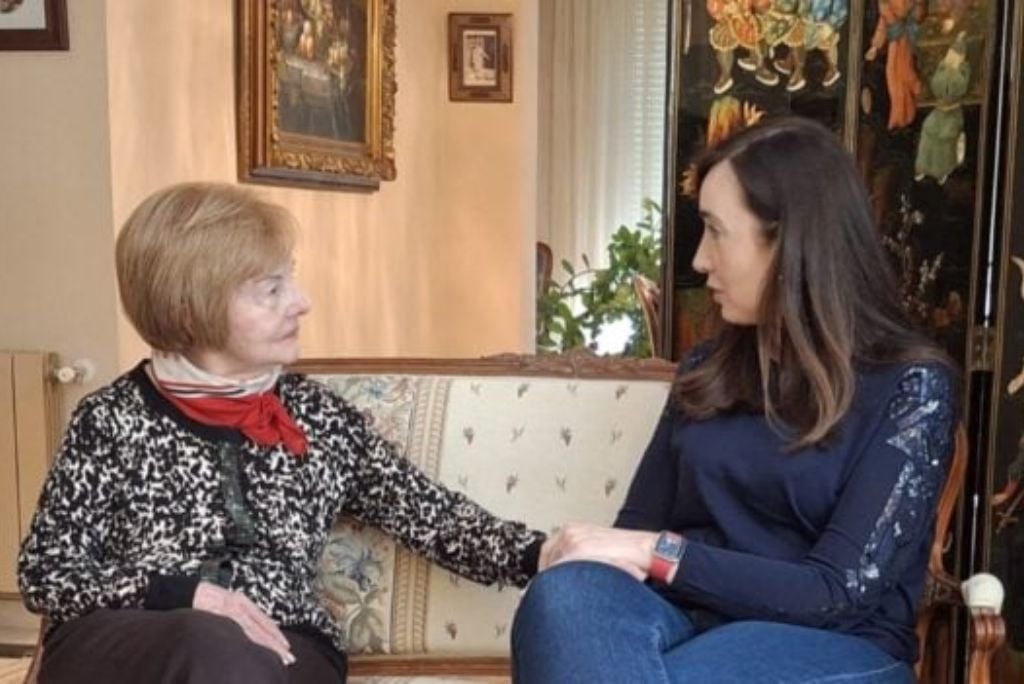In recent developments within Argentine politics, the vice president, Victoria Villarruel, has garnered significant attention for her controversial decision to unveil a statue of Isabelita, the first female president of Argentina and the world. This act has sparked a variety of reactions across the political spectrum, with supporters and detractors emerging from both inside and outside the Peronist movement. Villarruel emphasized that her move was not an endorsement of Isabelita’s administration, but rather an act of historical reparation for a woman who faced decades of persecution after her husband, General Perón, passed away. This decision closely aligns with Villarruel’s own storied past championing victims of political violence during the chaotic 1970s, a period which saw the assassination of several Peronist leaders by guerrillas.
The statue’s unveiling coincided with a significant date in Argentine politics, the Day of Peronist Loyalty, amplifying the political implications of the event. Villarruel’s actions have been interpreted by some as an effort to offer reconciliation and unity amidst the ongoing fragmentation in Peronist factions, particularly against the backdrop of the current presidency under Javier Milei, who has taken a vehemently anti-Peronist stance. Critics argue that the commemorative gesture represents favoritism towards Peronism that could alienate more moderate or anti-Peronist constituents who may view it as a direct challenge to the Milei administration. Meanwhile, Villarruel’s supporters contend that she is making a statement about party unity, reclaiming some lost respect for a historical figure within Peronism who has long been overlooked.
Furthermore, Villarruel’s criticism of left-wing Peronists, specifically directed at former president Cristina Fernández de Kirchner, reverberates in her remarks about national unity and reconciliation. Villarruel posed provocative questions regarding the handling of the nation’s issues under Kirchner’s leadership, questioning the efficacy and prioritization of political strategies in combating poverty and insecurity. By publicly voicing these criticisms, she attempts to realign the disenchanted voters of the Partido Justicialista (PJ) toward her own political faction, La Libertad Avanza (LLA). The historical context of Peronism suggests deep-seated rivalries and ideological strife, particularly in the wake of the internal conflicts that have plagued the movement.
Despite Villarruel’s present advocacy for Isabelita and her efforts to foster unity within dividing factions, historical contradictions have surfaced, revealing a more complex narrative. In 2016, she previously called for the arrest of Isabelita and her administration, criticizing their governance. This inconsistency raises questions about her sincerity and motivations in her recent homage to Isabelita, potentially undermining her credibility. As political allegiances shift, it may serve Villarruel and the LLA to emphasize the significance of Isabelita’s contributions to Peronism while distancing themselves from previous criticisms that may now seem incongruent.
Additionally, the broader context of Peronism highlights the struggles and transformations within the party over recent decades. The rise of Kirchnerism represented a radical wing of Peronism that has often engaged in fierce ideological battles, contributing to divisions and conflicts that Villarruel’s actions may now seek to address. With the controversy surrounding former president Alberto Fernández’s personal life casting further shadow on the Peronist legacy, the political landscape in Argentina appears more divided than ever. Villarruel’s move may take on even greater significance as she attempts to harness the legacy of Isabelita to unify an increasingly fragmented voter base.
Ultimately, Villarruel’s unveiling of the Isabelita statue reflects not only a revival of historical narratives but also demonstrates the potential for shifting alliances within Argentine politics. The discussions surrounding her actions will likely continue to provoke debate regarding the future of Peronism, the legacy of its leaders, and the ongoing tensions that characterize the nation’s political environment. Whether Villarruel can navigate these complexities and truly unify the disparate factions or if historical grievances will remain a significant barrier remains to be seen. Her actions may serve as a pivotal moment, indicating a potential realignment of political sentiments as Argentina grapples with its past and navigates towards an uncertain political future.

